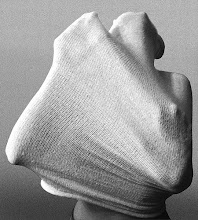Margaret Morris - The Mood Phone and the Circumplex Model
by Gary Wolf
A few weeks ago I wrote about the dream of the mood phone. This dream has been so persistent that its appeal probably reaches beyond mere technical utility to touch other, unspoken feelings about the role of the phone in our social life. After all, it is often hard to perceive the mood of a person on the other end of a phone conversation. The other person's mood is inaccessible to us through the instrument that connects us, and maybe we wish that the phone were enhanced, so that it could deliver a better signal about the state of the person we are talking to. The phone is intimate, in a way: we have their voice in our ear. But it is impersonal, also: we are kept from noticing many important things. Simultaneous intimacy and inaccessibility: this also describes our relationship with our own moods. We know our moods well, we feel them directly. And yet, sometimes we fail to notice them, or even mistake them. A person observing us from the outside can say: "Are you angry? You seem angry." And we may have to pause for a minute and ask: "am I angry?" We are both intimate with and separate from our moods, both near and far, like when we talk on the phone.In the earlier post I mentioned the work of Margaret Morris, who developed a research application for fostering emotional self-awareness on the mobile phone. The mood phone application includes mood scales and mobile therapies. Recently, she emailed to describe some of the ways she has dealt with the controversies over the best way to measure mood. (See this post for a review.) Below is her description of what she did.A key part of the Mood Phone project on fostering emotional self-awareness was the Mood Map. The Mood Map translates Russell's circumplex model of emotion into a touchscreen experience sampling tool. It is a single green screen organized by the two dimensions of arousal and valence. A red dot could be pulled around the map by fingertip to place one's current emotional state. This approach seemed to more elegant and less annoying than a long series of questions. I wanted to reduce the chances of worsening mood in the course of asking about it constantly. Iterative field studies led to a couple of design changes that made the tool more intuitive: removing internal mood labels from the mood map (see difference between two images below), and changing the vertical axis label from arousal to energy. The primary critique of the circumplex model -- that it does not allow simultaneous reporting of positive and negative moods -- was addressed through the addition of single dimensional scales for happiness, sadness, anger and anxiety. In the experience sampling sessions, people answered the mood map and then either all of the scales or a subset of them, along with questions about who they were with, what they were doing, eating, etc. The MyExperience sampling tool developed at Intel Research Seattle was a building block for this querying system.Analsysis of the Mood Map and other mood scales entries is ongoing but preliminary results seem to support Russell's bipolarity argument (i.e., there are negative correlations between emotion scales of opposite polarity). I interviewed people extensively throughout their use of the application. Most really liked the Mood Map as a means to check in on themselves at any given moment and calibrate their mood over time. No one complained about not being able to register positive and negative moods at the same moment, but ideally I would allow multiple entries in a single query. The visuals of the map definitely seemed to stick with people - they used the axes to frame their discussions of reactions, possible trajectories, self-correcting strategies, interpersonal dynamics, patterns of groups etc, whether or not they were talking about the map per se. In some of the field studies, people saw weekly trends of their mood patterns, as a function of behaviors (e.g., eating, sleeping), location, activity, social context. This self-investigation was interesting to most people and for some, prompted lifestyle and communication changes. Some aspects of this work are described in:Morris, M. 2007. Technologies for heart and mind: New directions in embedded assessment. Intel Technology Journal. Vol 11.

0 comments:
Post a Comment